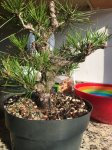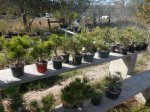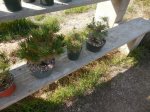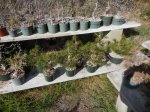faker
Mame
Just opened up my package from George Muranaka, and I'm now the proud owner of my first JBP.
Hoping to develop this as a shohin, but not really sure on a direction to go with it yet. Seems to half some issues with a little reverse taper, but I'm hoping growing the bottom most branches out as sacrifices might help with that. If I was more experienced, I might consider air layering off the top half, but I'm thinking I'll stick to the basics for now.



Hoping to develop this as a shohin, but not really sure on a direction to go with it yet. Seems to half some issues with a little reverse taper, but I'm hoping growing the bottom most branches out as sacrifices might help with that. If I was more experienced, I might consider air layering off the top half, but I'm thinking I'll stick to the basics for now.














